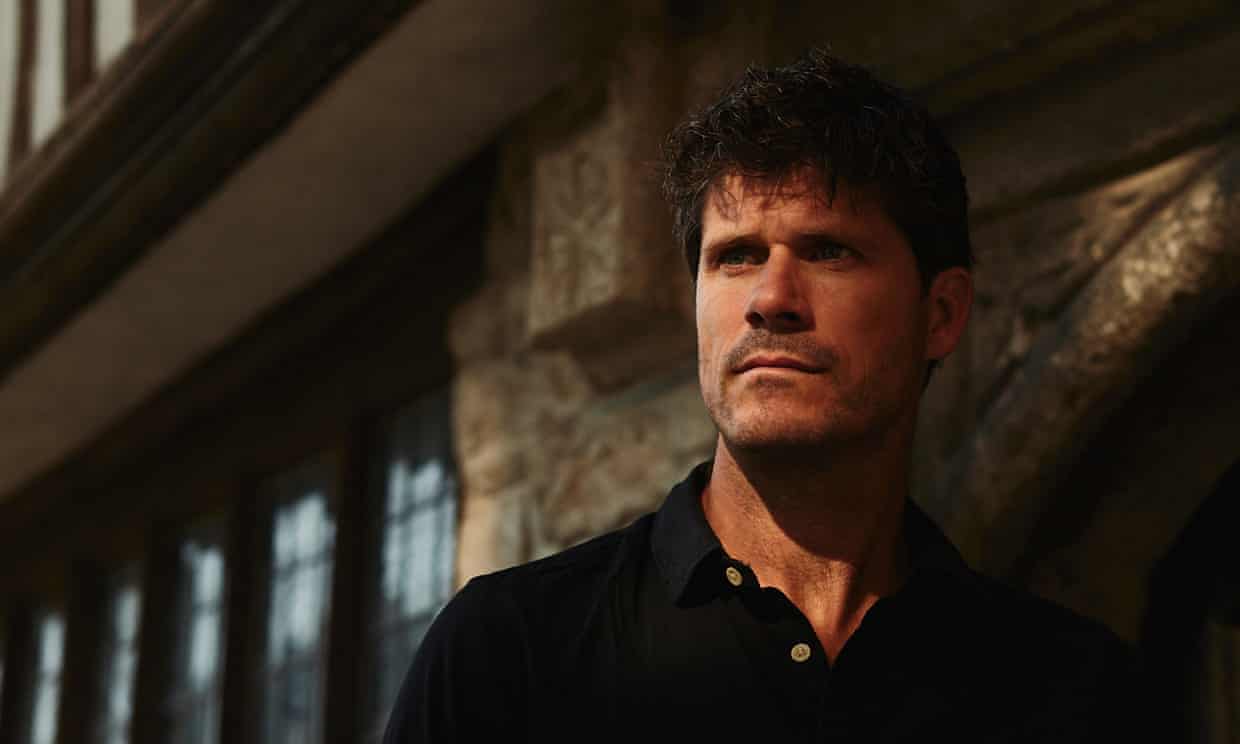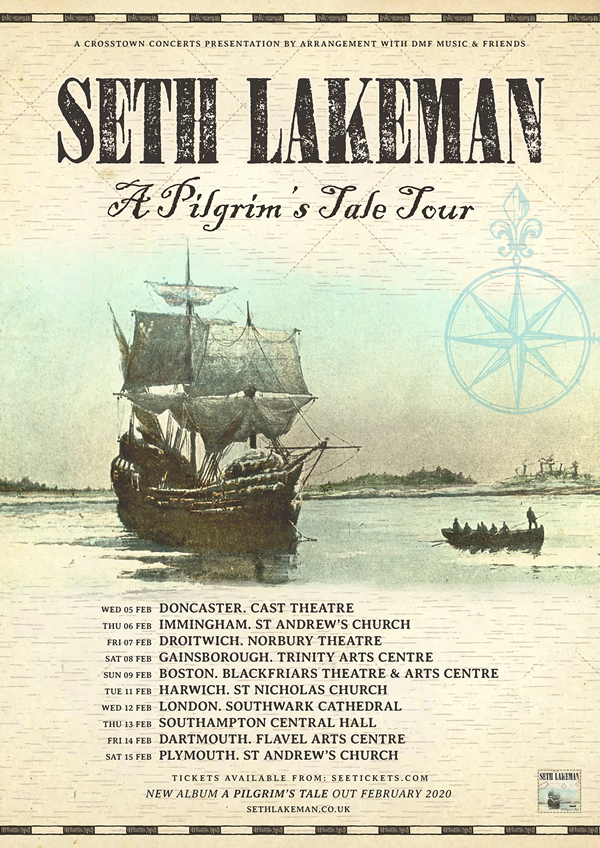

- Contact Us
- Search
-
Mayflower400 partner destinations:
How Seth Lakeman brought both sides of the Mayflower story to life
Feb 15, 2020
Venues like the Norbury Theatre in Droitwich Spa aren’t accustomed to playing host to multi award-winning global musical stars.
But Seth Lakeman is on no ordinary tour.
The international folk star has taken A Pilgrim’s Tale – a moving retelling of the Mayflower story – to small, intimate venues in the very towns, villages and cities that are connected to the Mayflower.
And 15 February 2020 was his final stop, playing inside the hallowed St Andrew’s Church in Plymouth itself, the city where both his musical journey began and the Pilgrims’ voyage started exactly 400 years earlier.
Yet A Pilgrim’s Tale – the album and tour title - is not simply just a story of how 102 passengers set off across the Atlantic looking for a new life.
For much of the album Seth spends his time telling a different story completely, a story from the perspective of those who watched the Mayflower arrive on their shores.
Seth’s inspiration comes from the Wampanoag tribe, the very people who helped the passengers of the Mayflower settle in their lands and survive the brutal conditions that welcomed them and led to the first Thanksgiving. For the Wampanoag, the story quickly becomes one of colonisation and war.
Seth, who grew up just outside Plymouth in Devon, met members of the tribe on a visit to the Plimoth Plantation in Massachusetts while touring with Robert Plant, and the lasting impact of his conversations with them resonates on every track of the album.
“The discovery of their side of the story has had a huge influence,” says Seth, speaking from the vestry of St Andrew’s Church in Plymouth before the tour’s final performance. “Seeing it from their view and understanding that Thanksgiving is far from a celebration but a national day of mourning, has been humbling.”
The wistful Watch Out is one of the album’s standout songs and was the first piece of music Seth would write after meeting the Wampanoag.
It is told through the eyes of a Wampanoag girl experiencing frightening premonitions about the Mayflower’s arrival and what the colonisation of her lands might mean. Not only would it establish a Wampanoag presence on the album, but also a musical style designed to represent them.
Other styles are present. Songs such as ‘Pilgrim Brother’ and ‘Sailing Time’, march at a hopeful cadence reflecting their early optimism. Others, like Great Iron Screw, literally recall the moment the ship was saved from breaking up by a 'great iron screw' the passengers had brought on board.
Close your eyes, and with each track you feel possessed by one of those 17th century characters. A crewman wrestling to control the ship, a Pilgrim celebrating in rapturous faith, or the solemn Wampanoag tribesmen forlornly surrendering to the new way of life thrust upon them.
Contributions from the likes of folk vocalist Cara Dillion have helped bring these differing styles alive, as well as actor Paul McGann providing the album’s narration.
Seth said: “After I travelled home to Plymouth everything happened in a quite mystical way. The songs came together so speedily and with exactly the vibe I wanted, and we recorded in a very short time in my studio at home on Dartmoor.
“I didn’t have far to go for inspiration. The Mayflower Steps, on Plymouth’s cobbled Barbican streets are 20 minutes away from me. I fished from this quay as a boy, sang songs on tall ships tied up here and played music in just about every old sailors’ pub in this Elizabethan quarter.
“The different people that are part of the story are represented by different sounds. An almost ghostly sound reverberates around the Wampanoag while the English sound is more traditional – with a booming sound the represents the crew.”

Before his American tour and subsequent meeting with the Wampanoag, Seth had already embarked on a project to create a body of work representing the 400th anniversary of the Mayflower.
He was approached by playwright and director Nick Stimson to work on such a project. It would become a collaboration with Theatre Royal Plymouth to write the songs for This Land, a piece of theatre involving a ‘community’ cast made up of members from both Plymouth, Devon, and the Wampanoag tribe. Those songs became A Pilgrim’s Tale.
But the germ of the idea originated from his love for the work of the late West Country folk artist and submariner Cyril Tawney – who wrote music dedicated to the 350th anniversary of the Mayflower’s sailing called A Mayflower Garland.

“The tour has been a fascinating experience and we’ve played in some wonderful venues and places that simply don’t attract touring artists – but they really should,” said Seth.
“We went to Harwich where I walked around the very home of the Mayflower Captain Christopher Jones. In Droitwich we played in a beautiful 1930s venue called the Norbury Theatre, staffed entirely by volunteers.
“It’s had an unbelievable reception – particularly considering the inspiration for the music is challenging and the themes are certainly bleak at times.
“The plan is to tour again later in November because of the demand, to bring it to more places and cities, to tell more people both sides of the Mayflower story.
“We would love to return to America and perform it in Massachusetts. That would be a special way to finish.”
Find out more at sethlakeman.co.uk
Sign up for the latest Mayflower 400 news
You'll be the first to hear the latest Mayflower news, events, and more.
Log In
Register
Mayflower 400 Proudly Supported by our National Sponsors and Funding Partners






